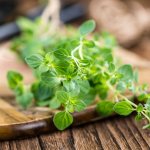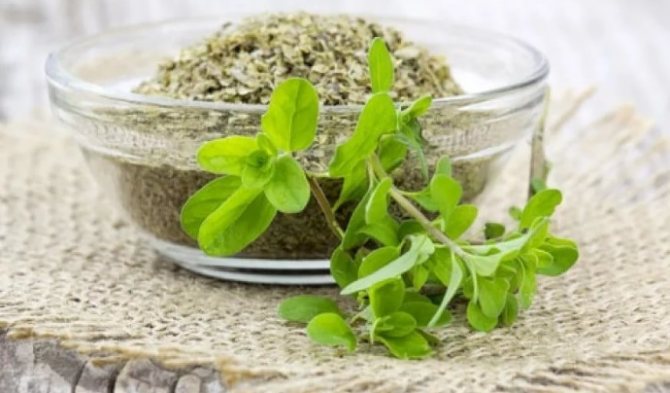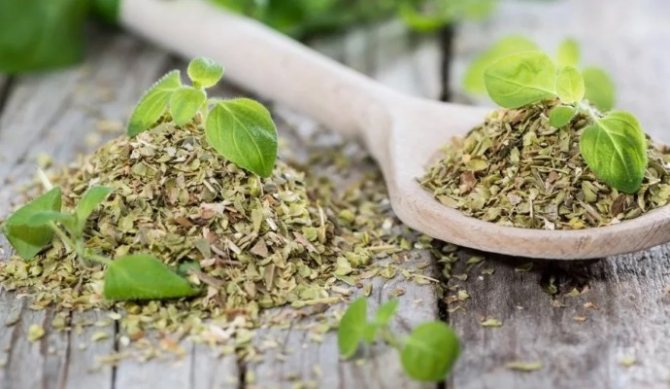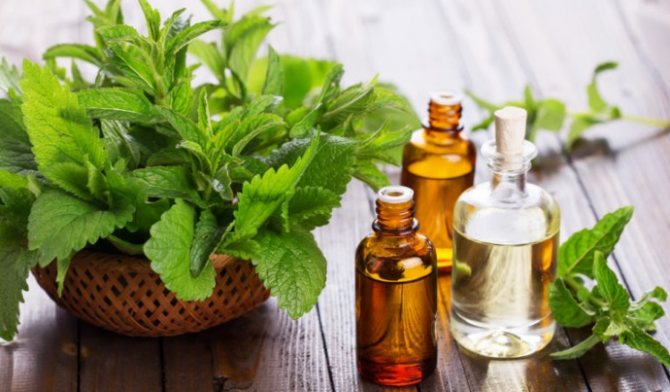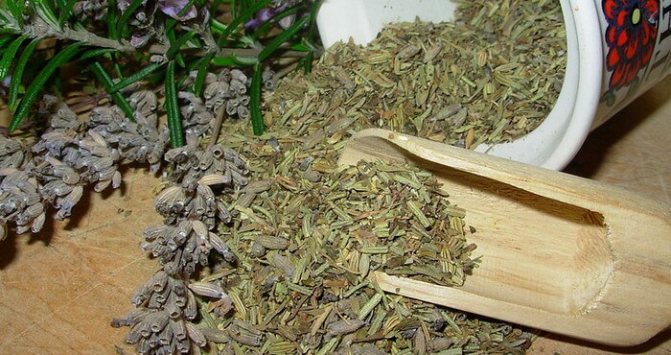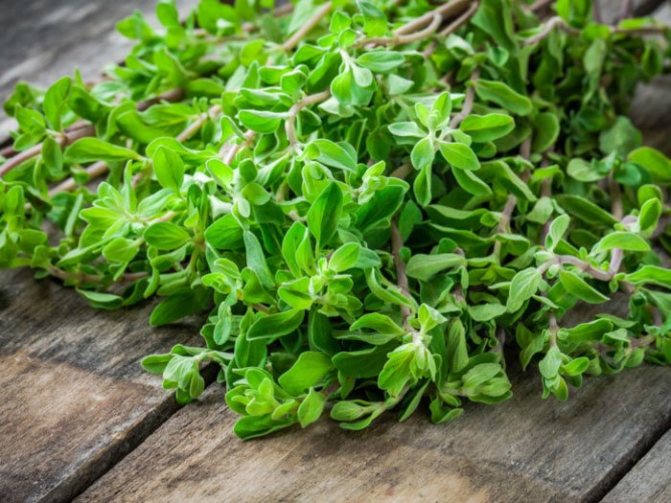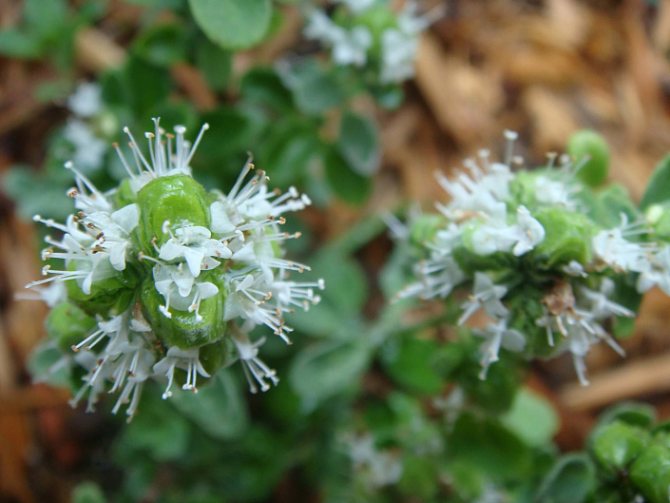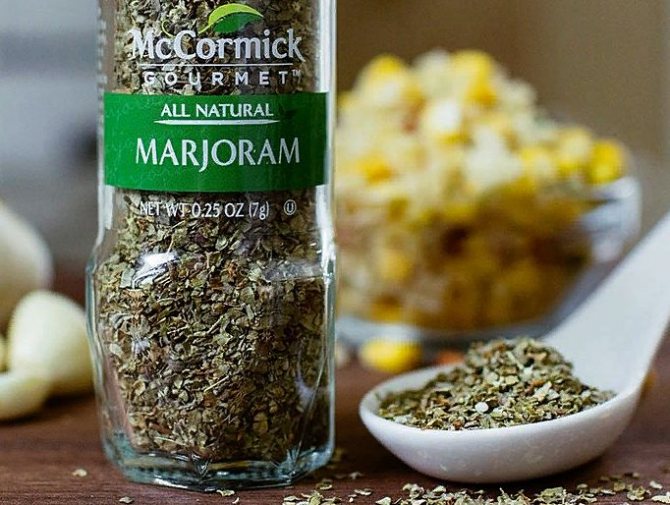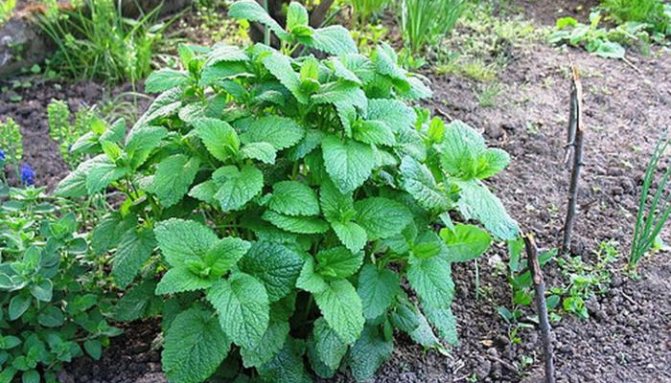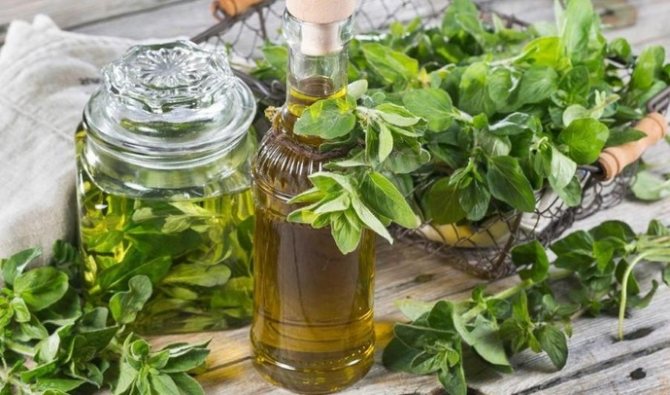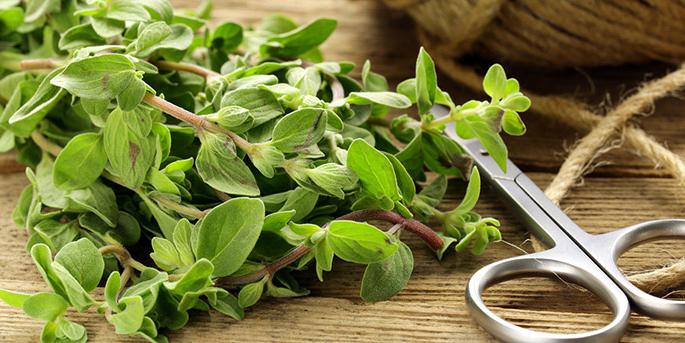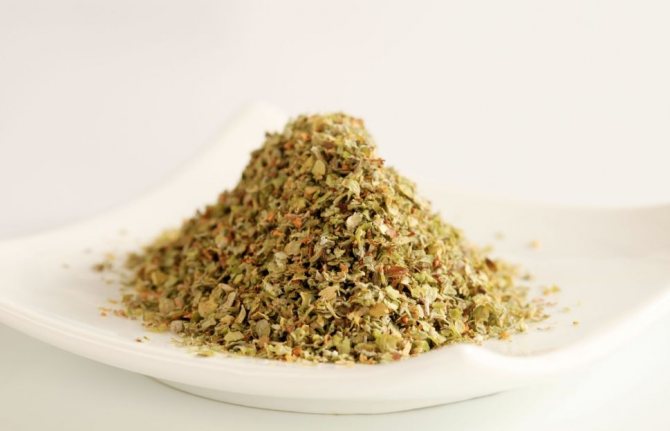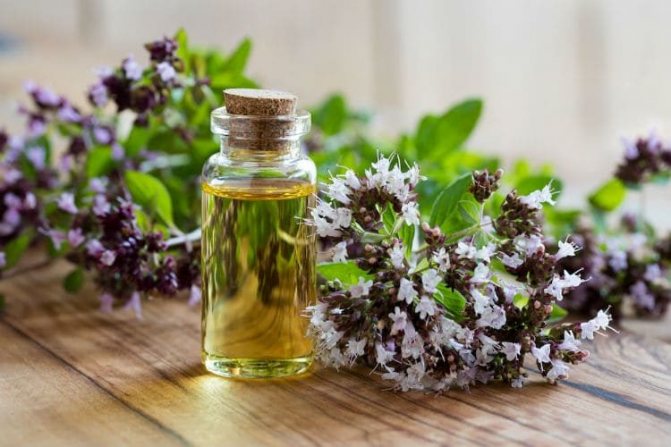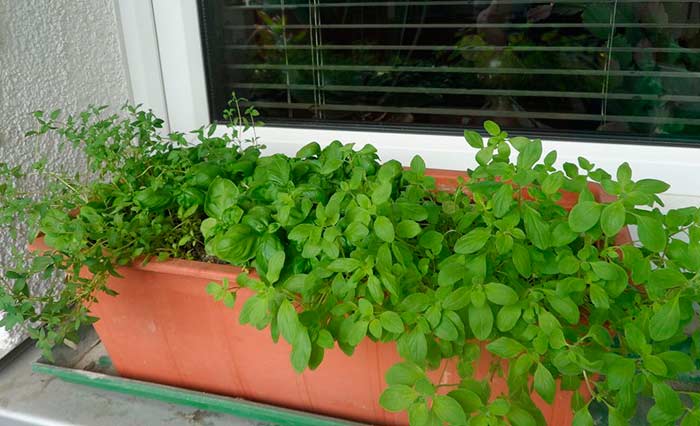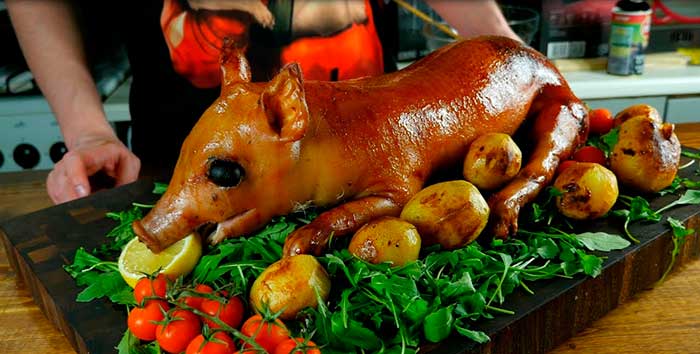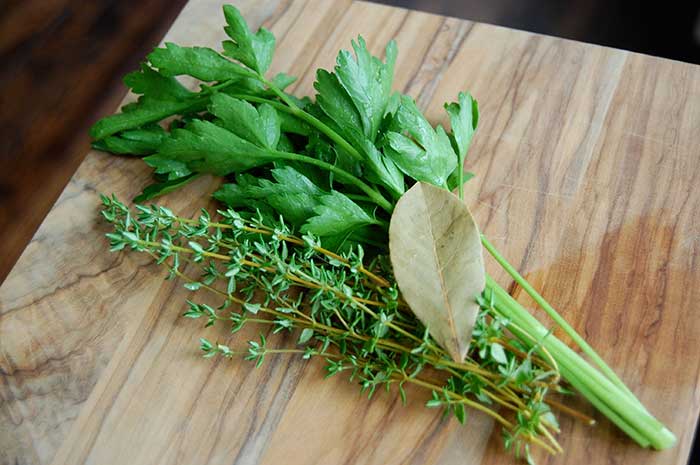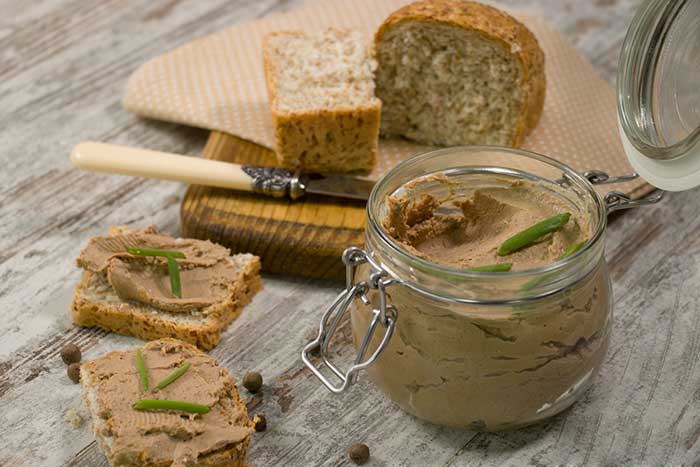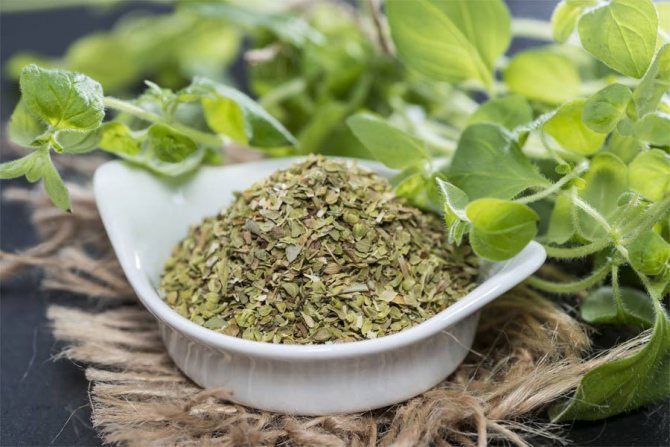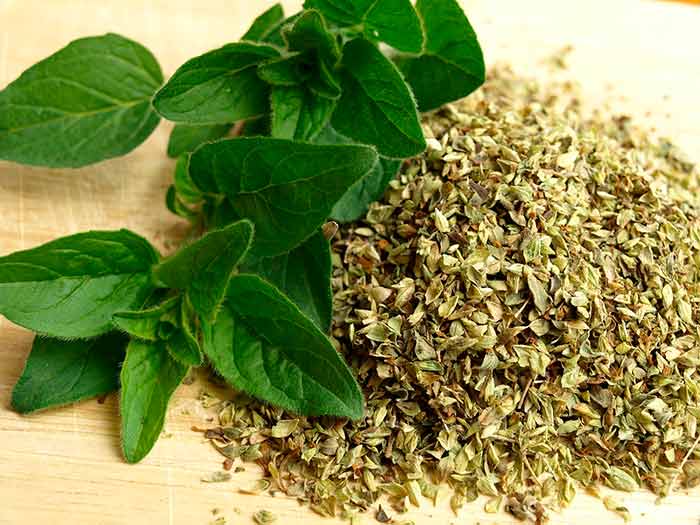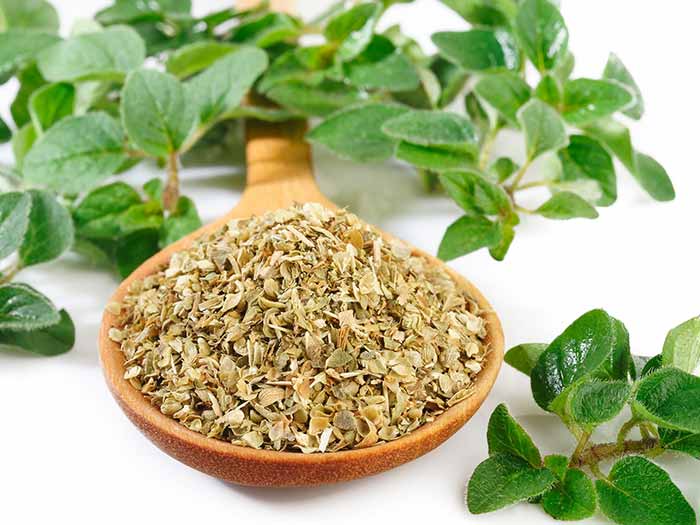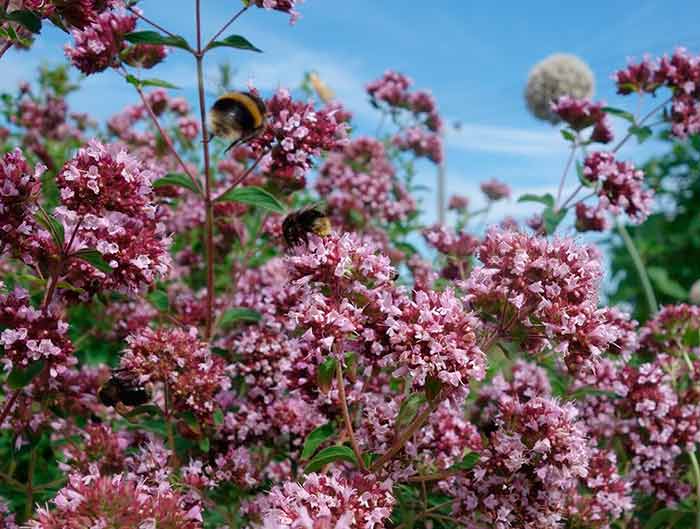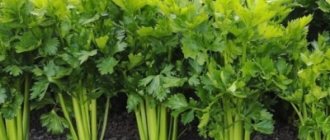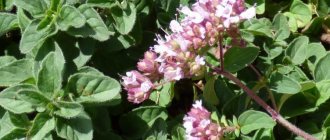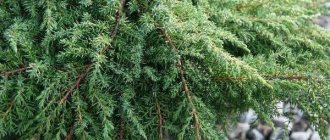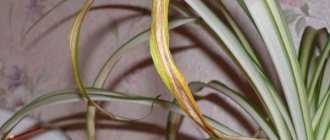When adding plants to dishes, we sometimes do not think about their benefits. Among the large number of spices and seasonings, the marjoram herb takes pride of place. The spice has many beneficial properties. It is used not only as a food additive in cooking, but also in medicine and cosmetology. Even dentistry and dietetics do not deny the beneficial properties of marjoram.
The magical properties of marjoram
Speaking about the benefits of this spicy herb, one cannot ignore the topic of magic. In ancient paganism, marjoram was an indispensable attribute of many sacred rituals. The ancestors believed that the smoke of dried twigs, which were burned on the altar, envelops those present with protection from evil spirits, slander and damage.
In those days, many hung bunches of marjoram over the entrance to the house to block the way for evil forces.
In ancient Greece, it was customary to give marjoram bundles to the spouses, it was believed that this would make their union strong and durable. To this day, in the East, the plant is used as a protective amulet.
Today, few people believe in evil spirits, but hardly anyone would argue that any plant has bioenergetic properties. Any aroma is capable of awakening certain emotions and feelings in a person, one way or another, affecting his psychological state.
The smell of marjoram soothes, soothes, reduces the level of depression and anxiety. It has a positive effect on libido, awakening tenderness and sensuality. Helps to improve mood, strengthen spirit and feel lust for life.
Smelling the scent while working can help you focus on the task at hand and find simple solutions to complex problems.
Diseases and pests
Young, fragile marjoram is often exposed to the disease - Alternaria. The disease is provoked by damp weather and high planting density. Gray spots on the leaves will tell the gardener about the appearance of the disease. Treatment with fungicidal preparations will help cope with the disease.
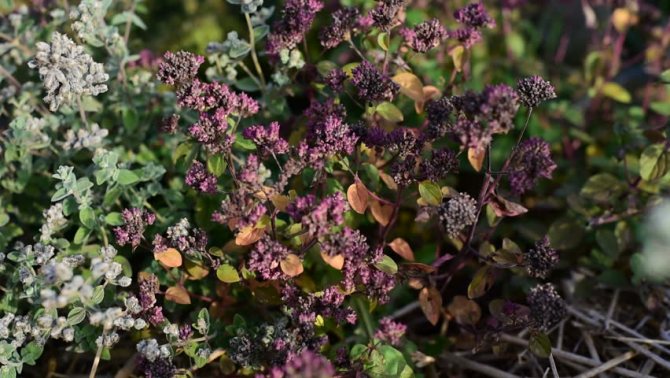
Sometimes the roots of the plant are affected by root rot. Waterlogging of the soil is the cause of the disease. The marjoram must be immediately transplanted to a new area with light soil, removing the damaged parts of the root.
Among insect pests, the larvae of the marjoram moth, which feed on leaves, are dangerous. The soil and plant must be treated with insecticides.
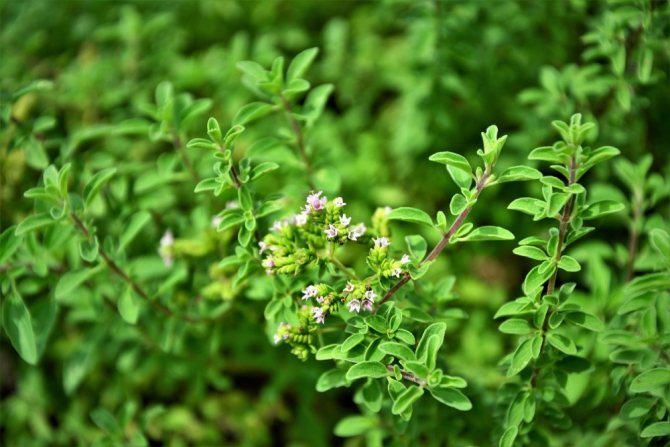

Growing spicy marjoram is within the power of any novice gardener. Having once planted a useful crop on your site, it will be difficult to abandon its further cultivation. The amazing taste of the herb will add spice and aroma to any dish. In addition, the plant will perfectly fit into the garden landscape or decorate the window sill of the apartment.
Marjoram herb medicinal properties
Myrtle tree. Photo. Useful properties of myrtle. Useful properties of myrtle
The benefits of greens are so great that in alternative medicine they are used to treat many diseases. The plant is used in cosmetology, as well as for skin problems.
The healing properties of marjoram
- Improves the intestinal microflora, helps to get rid of flatulence, inflammatory processes in the gastrointestinal tract (colitis, gastritis).
- Promotes digestion and assimilation of heavy foods.
- Relieves stomach cramps, reduces pain of a different nature.
- Stimulates the work of the gallbladder, liver.
- Helps with kidney inflammation, cystitis, urethritis.
- Effective in the treatment of migraines.
- Reduces painful manifestations of postmenstrual and climacteric syndrome in women.
- It has a beneficial effect on the work of blood vessels and the heart, is a good prophylactic agent for heart attacks.
- Relieves inflammatory processes in the body.
- Effective for colds, helps to quickly cure bronchitis, cough, runny nose.
- Useful for people with diabetes.
- Calms the nervous system, improves sleep.
- When used topically, it helps to heal wounds, ulcers, eczema and other skin lesions.
- In dentistry, it is effective in treating gum disease and other diseases of soft mucous tissues.
- In cosmetology, it helps to reduce acne, rejuvenates the skin, tightens pores.
- As rubbing and compresses, marjoram is used for arthritis, bruises, sprains, muscle pains.
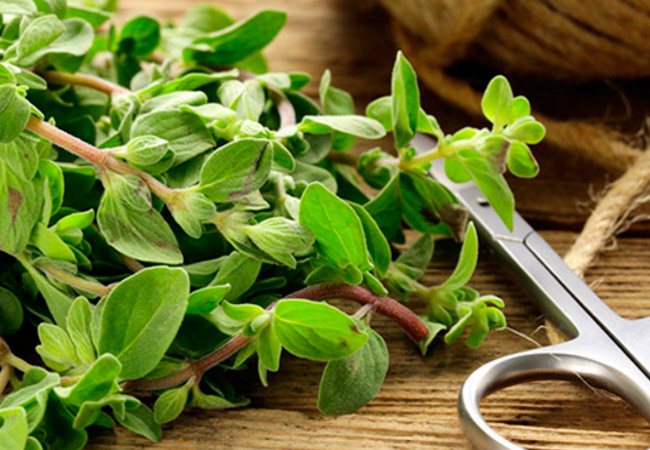

The healing properties of marjoram
Marjoram useful properties and harm
Valerian medicinal benefits and harms, properties, application, photo
The use of marjoram in cooking
Provencal cuisine would have lost its appeal if there was no marjoram in it. Marjoram is used as an additive to hot dishes of meat, fish, soups, various stews. In addition, recipes for using marjoram are not limited only to cooking, but many brewers, cheese makers and sausage makers use it perfectly in their recipes. In dried form, it is used for canning zucchini and cucumbers. They also use this herb to infuse vinegar, and then add it to salad sauces. The popular Caucasian seasoning "khmeli-suneli" also did not bypass this plant.
Useful properties of marjoram
Marjoram has many health benefits. It contains such valuable substances as: vitamin C, carotene, essential oil, rutin, tannins, pectin, various minerals and bitterness. Marjoram essential oil is unique. It has a strong, pleasant scent. It is better to stock up on them during the flowering of the plant, there is also a lot of oil in the fruits of the plant.
The benefits and harms of marjoram
Traditional medicine has long known why marjoram helps. For a long time it has been used as:
- good gastric remedy,
- medicine for headaches,
- respiratory diseases,
- insomnia
- depression,
- nervous disorders
- liver diseases,
- kidneys,
- gallbladder.
For women, this plant will help normalize the menstrual cycle, make this process less painful. Also, marjoram is a part of medicinal herbs in the treatment of rheumatism. On the basis of marjoram, medicinal ointments are made for the treatment of children's rhinitis, viral infections. Also, pharmaceuticals use this herb for the production of healing ointments that will help relieve inflammation, cure abscesses, ointments prescribed for difficult cases of dislocation, since marjoram has a warming effect.
Marjoram has a positive effect on the general well-being of a person, therefore, doctors often use the medicinal properties of this plant and prescribe it to patients with diabetes mellitus and those who have recently had a heart attack.
Who is marjoram contraindicated for?
With a large number of versatile useful properties of marjoram, there are some limitations in its use. So, they are not recommended to be abused while carrying a child and people who are allergic to this plant.
Marjoram should be used with caution for people with low blood pressure. Also, do not add this herb to food too often and too much, as it can cause feelings of depression and lead to a bad mood.
The chemical composition of the plant
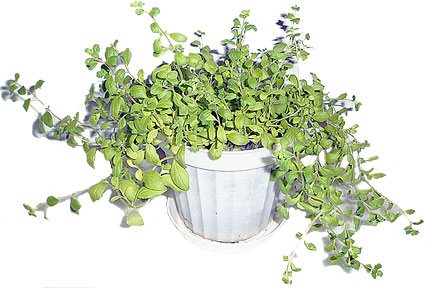

The uniqueness of marjoram and its benefits are determined by its chemical composition, which is rich in vitamins A, C, E, K, H and representatives of group B. Beta-carotene and essential oil are present in high concentrations. During the flowering period, it accumulates in large quantities.
The plant is rich in rutin, folic acid, pentosan, tannins and pectin substances. The composition contains more than 10 elements of mineral substances, of which potassium and calcium are considered leaders.
The best recipes using marjoram
Snake ordinary useful properties, contraindications, photo
Here are some of the best recipes using this wonderful seasoning.
Stewed beef liver
You will need
- Fresh liver - 1 kg;
- Onions - 2 large or 4 small heads;
- A little vegetable oil for extinguishing;
- Salt;
- Black pepper;
- Sweet red pepper;
- Marjoram;
- Oregano;
- Ground bay leaf.
All spices are taken by a pinch.
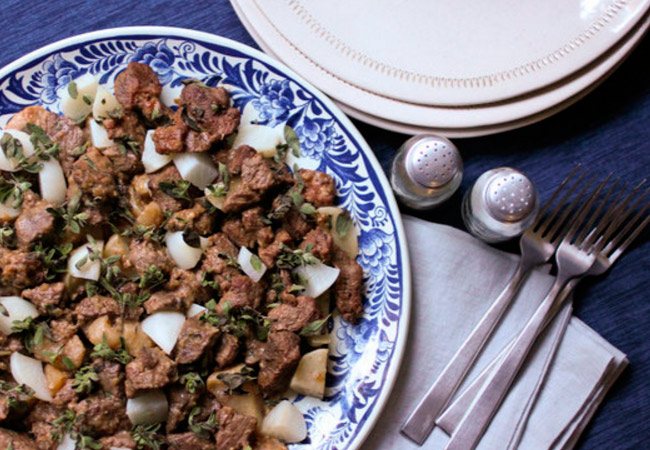

Best marjoram recipes: liver stew
How to cook
Rinse the liver, you can soak it in milk or water in advance, if desired, cut into small cubes.
Heat a small amount of oil in a frying pan, chop the onion and lightly fry. Add the liver to the golden onion, season it with pepper and salt, bay leaf, cover, simmer for 20 minutes over low heat. If there is not enough of your own juice in the pan, add a little water.
After the time has elapsed, open the lid and add oregano and marjoram to the liver, mix everything, simmer for another 1-2 minutes, then remove the dish from heat.
Serve with a side dish of your choice. Stewed liver is best paired with mashed potatoes.
Stewed vegetables with marjoram (dietary dish)
You will need
- White cabbage - 500 gr.;
- Carrots - 1 large;
- Pumpkin - 300 gr.;
- Onions - 2 medium pieces;
- Tomatoes - 3-4 pcs.;
- Bulgarian pepper - 2 pcs.;
- Table vinegar;
- Vegetable oil.
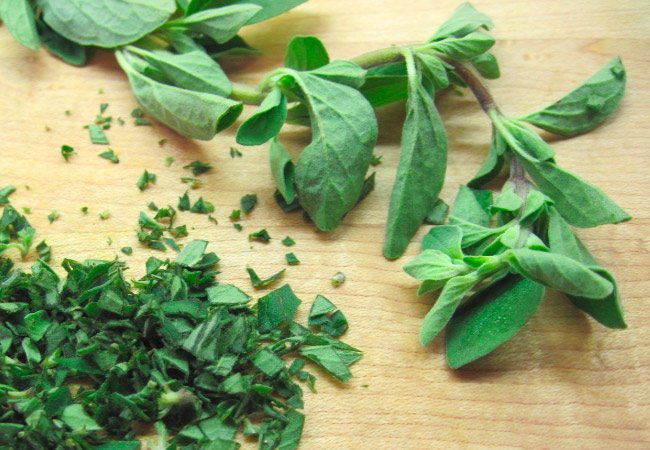

The use of marjoram in cooking for stewing
Spices (fresh or dried):
- Marjoram;
- Rosemary;
- Thyme;
- Black pepper;
- Parsley.
How to cook
Chop the cabbage, grate the pumpkin and carrots on a medium grater. Mix everything with your hands so that the vegetables give juice, salt, pepper and season with vinegar (a couple of teaspoons).
Chop the onion and simmer in a deep frying pan with a little oil. When the onion turns golden, put the grated vegetables in it, simmer them for about 15 minutes. Then cut the tomatoes into slices and add them to the mass.
When the tomatoes give juice, cover the pan with a lid, reduce the heat and simmer for another 15-20 minutes. After that, season with all the remaining spices, stir and extinguish the heat - the spicy vegetables are ready. The dish can serve as a side dish or be an independent diet food.
You will need
- Pork (you can use beef) - 0.5 kg;
- Onions - a couple of medium pieces;
- Potatoes - half a kilo;
- Champignon mushrooms - 300 gr.;
- Black pepper - a pinch;
- Fresh or dried marjoram - bunch or pinch;
- Garlic - a couple of cloves;
- Salt;
- Vegetable oil.
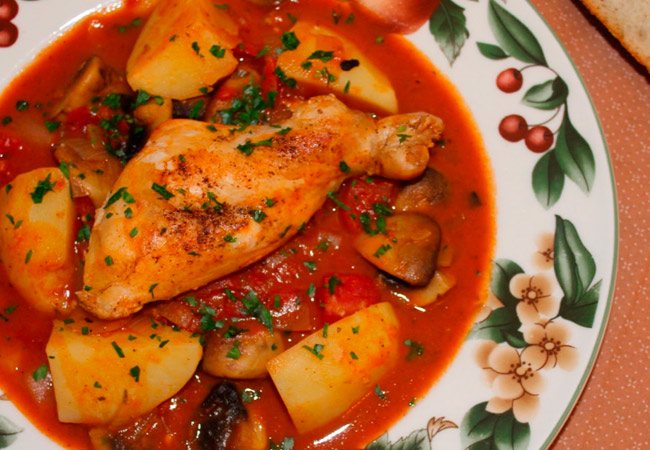

Homemade roast: recipe with marjoram
How to cook
Rinse the meat, cut into medium pieces. Finely chop the onion, cut the carrots into cubes, the mushrooms into slices.
Heat the vegetable oil in a deep dish, lightly fry the onion, then add the mushrooms to it, simmer for at least 5. Then add the carrots, simmer for another 3 minutes.
Add meat to vegetables, seasoning it with chiseled garlic and pepper. Simmer the dish for 20 minutes, covered with a little water. During this time, peel the potatoes and cut them into medium cubes. After the time has elapsed, open the lid, add the potatoes, if necessary, water, salt everything, close the lid and simmer for another 20 minutes. Finally, season with marjoram, stir and remove from heat.
Of course, marjoram is used in hundreds of different recipes, and you yourself can improvise and try to add it to different dishes. It all depends on your tastes and imagination. But if you have not yet come across this seasoning, then it is better to start with small portions, because the aroma of the herb is quite specific and not everyone likes it.
You can also add the herb to regular brew tea, rosehip infusion, vegetable juices and herbal teas.
Marjoram, which is widely used in cooking, is a truly versatile and affordable seasoning that will enrich any of your gastronomic delights with taste. Do not forget also about the benefits of this plant and try to use fresh leaves more often, as they contain more vitamins and minerals.
Application in cosmetology
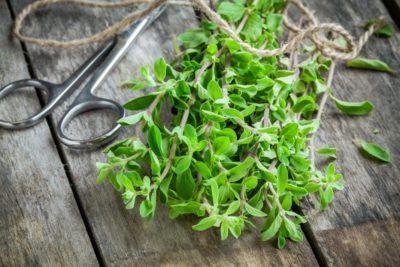

Fragrant marjoram is famous for its beneficial effects on hair and skin, so its decoction and oil extract can be used for cosmetic purposes. It:
- narrows the pores;
- strengthens hair follicles;
- destroys dandruff;
- heals cracks in the skin, moisturizes it.
A few drops of the extract are optionally added to the face cream or hair products. If desired, it can be added to hand, nail and nail baths.
Marjoram seasoning in cooking
What dishes add spice
Vegetable. Whether it is a dish of eggplant, zucchini or potatoes, it will acquire an unforgettable taste if you put a little of this wonderful seasoning in it.
Potato dish
Meat. Marjoram added to it will add a unique touch to a meat or poultry dish. It will be wonderful to combine with pork, goose, improve the taste of minced meat, zraz or cabbage rolls.
Canning. Salting or pickling vegetables with the addition of spices will completely change the housewives' idea of this type of cooking.
Many chefs use marjoram as a pizza condiment.
Sweet dishes such as jellies and sorbets will be more unusual and richer if you put a pinch of spice in them.
Leaves can be added to drinks and desserts, for example, to compote or jelly. If you need to achieve a healing effect, then you can add marjoram to tea or collection, it will go well with honey.
Muffin with marjoram
What can replace seasoning
In the recent past, marjoram and oregano were considered the same spice. Marjoram can be replaced with oregano, or oregano (another name for the spice), provided there is no seasoning in the kitchen. The next according to the standards of "similarity" is black pepper. A salt-free diet allows for salt substitution with marjoram.
Origanum vulgare
How to add seasoning to dishes
It is recommended to add spice a few minutes before the dish is ready. Spice, dry or fresh, pre-grind.
What spice tastes like
The taste of the seasoning is sharp and spicy, with a sweetish tinge. The pleasant aroma that comes from marjoram can be compared to cardamom.
How to store
If you have fresh marjoram leaves, wrap them in a damp towel, then place them in a plastic container and store in the refrigerator (in the fruit and vegetable compartment) for a maximum of 4 days.
If you want to dry the grass, for this purpose you need to disassemble the marjoram into bunches, hang them in a dry place that is well ventilated. The spice has the property of retaining its aroma even when dried.
Growing marjoram from seeds
Before growing a plant such as marjoram, you need to take care of the necessary conditions for this. The heat-loving species does not accept the cold, the lighting should also be normal.
Most often it is grown as an annual that cannot grow in frost conditions.
Marjoram is drought-resistant, most suitable sites on which loose fertile soil and a good drainage system.
The plant propagates in the following ways: seed and vegetative.
Soil preparation. The area where the seeds of the plant will be sown is thoroughly plowed and fed with the help of mineral fertilizers at the rate of: superphosphate (0.4 kg / m2), humus (30 kg / m2) and potassium salt (0.2 kg / m2).
Sowing
- In the spring, shortly before sowing, ammonium nitrate should be added to the soil (not exceeding 0.15 kg / m2).
- The seeds are pre-mixed with river sand.
- Sow them to a depth of about 1 cm (at least), leave an interval of 70 cm between the rows.
Good to know
- It is good to use marjoram vinegar for dressing salads - this will give an additional flavor to the dish;
- It will not hurt if you put a little marjoram in a cold fish appetizer;
- Borrow an idea from the Czech Republic - cook pork soup with seasoning, the taste of the usual dish will change several times;
- The national Italian dish - beef and rice soup - cannot be imagined without this spice, it is irreplaceable.
Oregano and marjoram
Both of these plants (oregano and marjoram) are from the same class (as can be seen from the names), but the difference between these plants is in their species.
Origanum majorana (marjoram) - grows in southern countries, does not grow on the territory of the Russian Federation.
Origanum vulgare (oregano) is an unpretentious plant, widespread in Russia, the conditions of the Far North and some cities of Siberia are not suitable for the plant. Found in forests, as well as on forest edges. Many people know this herb as an additive to tea. Has a wide range of indications for use.
Origanum majorana Origanum vulgare
How to cook at home?
You can grow marjoram yourself if you have a summer cottage, or you can buy it on the agricultural market. Harvesting is done in mid-summer and early autumn in dry weather.
- The plant is washed in a bowl of cold water, rotten and black shoots are thrown away, the root is separated.
- Then the washed marjoram is tied in small bunches of 5-6 plants and hung out to dry in the open air in the shade. East windows or a balcony on the east side are best suited for this. If the weather is rainy, you can dry the plant in the kitchen above the switched on stove, at a distance of at least a meter.
- The readiness of the raw material occurs in a few days, when the leaves become completely fragile. At the same time, the essential oil component should be preserved in them, this becomes clear when rubbing dry leaves between the fingers.
- Then the grass is crushed with a special shaker and stored in a dark place in a tightly closed container.
You can add others to this spice, such as hot peppers or nutmeg.
Plants from western Asia are considered the best in taste and aroma. Of the varieties, French, Spanish and the so-called "wild" marjoram are preferable.
Growing marjoram from seeds
Marjoram seeds do not germinate well in open field conditions, so the culture should be grown through seedlings:
- Sowing is carried out in the last days of March or at the beginning of April. A soil mixture is placed in the container (humus and sod land in a ratio of 1: 2, respectively). In addition, you can add crushed chalk or lime (in small quantities).
- After slightly moistening the substrate, a mixture of seeds and river sand (in a ratio of 1: 5) should be laid on its surface, and the soil passed through a sieve should be poured on top of it (with a layer of 3 mm). Cover containers with glass or foil. Growing temperature + 20-22 °. From time to time, containers need to be ventilated and condensation removed. If the mixture dries up, it should be sprayed.
- After 2-3 weeks, when the first shoots hatch, it is necessary to remove the glass (film) shutter from the seedlings. In the place of cultivation, it is necessary to lower the temperature to + 16 °. After 1 week, set the following temperature regime in the room - in the daytime + 16-18 ° C, at night + 14-16 ° C.
- Seedlings can be planted in the ground only after the end of the night frost period.
- Up to 20 bushes should be planted in the garden bed. The optimal distance between bushes is up to 20 cm, between rows 40-50 cm. A well-lit garden bed should be protected from drafts and sharp gusts of wind.
- The plant should be planted on sandy loam or loamy soil. 6-7 days before planting, the bed must be dug up to a depth of half a meter, and then fertilize the soil. For 1 sq.m add compost (half a bucket) or humus, urea (20 g), potassium sulfate (20 g), as well as superphosphate (40 g). After the garden has been dug up, it must be moistened with water (1 sq. M - 5 l).
- When planting seedlings, the earthen lump is not removed. After planting, the soil around the plants must be compacted and moistened. Organize daily watering (within 14-20 days), make sure that the seedlings are not exposed to direct sunlight. When the plants get stronger, you need to take care of feeding. For this, a nitrate solution is perfect (for 1 square meter, you need to prepare a mixture - 15 g of saltpeter and 10 liters of water).
To prevent the marjoram bushes from drying out, they must be carefully looked after.
You need to take care of:
- regular watering;
- loosening the soil;
- weeding;
- top dressing;
- protection against fungi.
Marjoram is a perennial, aromatic herb with many health benefits that deserves its own place in every kitchen. So for those who haven't tried the hot spice yet, it's time to fix it.
Marjoram care
To get a good harvest of marjoram, you need to pay attention to it, but excessive efforts will not be required. The crop loves moisture, so it should be watered often and abundantly, but short-term drought won't do much harm. The drooping leaves will quickly recover after irrigation. Since July, watering is carried out less frequently, allowing the surface of the soil to crust over.
After planting marjoram, one top dressing is enough. It is applied in 3-4 weeks, approximately after the completion of adaptation. Potassium salt (10 g), urea (10 g) and superphosphate (15-20 g) are diluted in a bucket of water. The resulting solution is poured onto 1 m² of beds. Further, there is no need to worry about feeding.
Useful properties of marjoram
At the present time, the use of marjoram was limited to cooking, and its healing properties were unfairly forgotten and relegated to the background. But knowing about the composition of this plant, you can consciously include it in your diet in order to use the beneficial properties of marjoram purposefully, with benefits for the body and spirit.
So, marjoram, possessing a rather strong floral-spicy aroma and a burning, pungent, sweetish taste, is a storehouse of useful substances, vitamins and minerals. Successfully replacing pepper as a seasoning, it is remarkably combined with thyme and oregano, it stimulates digestion, cleanses the body of toxins and toxins, has an analgesic and sedative effect, is indicated for flatulence and pain in the stomach and intestines, is indispensable in the dietary nutrition of gastric patients. Such beneficial properties of marjoram are due to the presence of a large amount of dietary fiber (21.4g / 100g of fresh herbs), the composition of the essential oil (the main component is terpenes), the presence of vitamin B9 (274mkg / 100g), vitamin K (621.7mkg / 100g) , tannins, phytoncides and flavonoids.
Marjoram, whose benefits are also revealed in its diuretic and antirheumatic effect, is indicated for diseases of the kidneys and gallbladder. It will also help after a myocardial infarction, since it contains a large amount of potassium (1522mg / 100g!) And magnesium (346mg / 100g). And these microelements, as you know, are responsible for the normalization of the work of nervous, muscular and cardiac activity, gently regulate water exchange and enhance the withdrawal of fluid from the body.
The high content of rutin in young shoots of marjoram (127mg / 100g) successfully allows using this spice to strengthen and cleanse blood vessels, with varicose veins, and the treatment of thrombophlebitis. The presence of iron (82.71mg / 100g), manganese and copper in the composition of marjoram helps to cleanse the blood and improve its formula.
Marjoram is also of great use in the treatment of headaches, menstrual and toothaches, migraines and cramps. A powerful antidepressant, it improves well-being, activates brain activity, strengthens the immune system and allows you to actively resist viral and colds, is a good antiscorbutic agent, since it contains a fairly high content of vitamin C (51.4 mg / 100g), contains vitamin E (1.69 mg / 100g) and selenium (4.5mkg / 100g).
The use of marjoram is also invaluable as ointments and rubbing for external use.Thanks to the organic acids that are part of this spice, the ointment based on marjoram has an antiseptic effect and is perfect for the treatment of rhinitis and diseases of the upper respiratory tract, especially in children. In addition, ointments containing marjoram essential oils are good as a wound healing and pain reliever for cuts, bruises, rheumatism, radiculitis, arthritis, gout and osteochondrosis.
Marjoram, the beneficial properties of which are not limited to this, can successfully replace salt, and therefore is used in salt-free diets. This property is especially valuable for diabetic patients and adherents of a healthy diet. The high calorie content of marjoram (271 kcal / 100g) should not bother the adherents of the spice, since it is not consumed in such quantities, and 2-3 grams per day will not only not bring harm, but will also provide considerable benefit to our body.
As for the nutritional value of this product, there are 39.2 g of carbohydrates per 100 g of fresh greens, 12.7 g of proteins, 7 g of fats, while this plant contains only 7.6 g of water per 100 g.
Marjoram harm
The beneficial properties of marjoram are undeniable, but like any other food product, it should not be overused. May cause headaches and feelings of depression in large quantities
Use with caution in pregnant women. In some, very rare cases, it can cause individual intolerance
How to choose marjoram
Fresh marjoram should be juicy and bright in color, and not show signs of plant sluggishness and visual damage. Dry marjoram can be represented by leaves, stems and flowers. The stems and leaves should be green with a characteristic gray tint for marjoram, and the flowers should be pink.
How to store marjoram
The pre-washed fresh plant can be stored in the refrigerator in a bag or, like a bouquet, in a jar of water. To preserve its aroma and useful properties, dry spice must be stored in a sealed container.
Essential Oil Applications
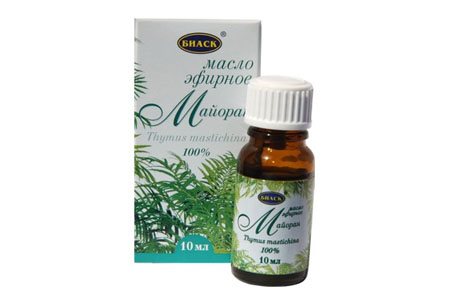

Marjoram essential oil is a light amber liquid with a specific aroma reminiscent of camphor. To obtain this product, the marjoram flower is harvested. It blends perfectly with jasmine, bergamot, clove, juniper, patchouli, cypress and rose oils. The plant oil has analgesic, bactericidal, antioxidant, expectorant, stimulating and regenerating properties.
Marjoram essential oil is used as a rub for gas in babies. It also has a carminative, diaphoretic, absorbable, antiseptic effect. Essential oil helps to relieve nervous tension, relax the body. For this, it is recommended to take baths with the addition of a few drops of this remedy. With the help of oil, heal wounds, cleanse the skin and eliminate skin inflammation.
Marjoram the best varieties
Each type of plant is subdivided into varieties, there are quite a few of them, we will consider the most common ones that are used in cooking and folk medicine.
- "Cretan" (lemon) - squat dense bushes have dense, almost round velvety leaves with a blue or gray tint. The variety differs in unusual flowers, they are large, hanging, have a color from light pink to deep purple. Due to the lemon notes in taste, the leaves are often used as an additive to tea. You can collect the plant for these purposes already at the end of spring. For drying, it is cut at the end of August. It is rarely used as a seasoning.
- "Baikal" is the most suitable variety for seasoning in cooking. The shrub is rather large, sweeping, it can reach a height of 50-60 cm. The leaves are oval, rich green, densely planted on the stems. The stems themselves are straight, tough. Marjoram has a very pronounced aroma and is ideal for drying.
- "Tushinsky Semko" - this variety is also a large shrub with upright dense stems.Distinctive features are pointed and finely toothed leaves. The plant is ready for harvesting in 3-4 months from the moment of germination. Marjoram blooms in small flowers, collected in dense inflorescences. Until flowering, it can be eaten fresh, then it is better to dry it.
- "Gourmet" - it is also called "sweet marjoram". The shrub is undersized, with dense small dense smooth leaves. Sometimes there is a silvery bloom on the leaves. You can cut off the branches after 3 months. after germination. This variety is great for fresh consumption, it is added to salads, sauces, hot dishes, sausages.
- "Scandi" is a large, branched shrub with small ovoid leaves of light green color. The variety blooms with white inflorescences. Ready for collection in 4-4.5 months after germination. Suitable both as a seasoning and for medicinal purposes. It can be dried or consumed fresh.
- "Thermos" - reaches a height of no more than 40 cm, the leaves are slightly lowered, have a silver or blue tint. It blooms with light creamy or white small inflorescences. Suitable for food in any form.
Any types and varieties of marjoram when growing require the main condition - a stable warm air temperature.
With regard to the soil, the plant prefers slightly acidic or neutral soil. Best of all, greens are adjacent to cabbage, potatoes, onions, dill, parsley. Do not allow the soil to dry out, and in the spring it is advisable to feed the spice with ammonium nitrate.
In general, the culture is not capricious and in the warm season grows well in open sunny areas. Many have gotten used to growing marjoram right at home, on balconies or window sills.
The easiest way is to grow garden marjoram, it sprouts faster, ripens earlier and is better suited for consumption. The plant contains a large amount of vitamins and minerals.
Fresh marjoram should be added to hot dishes at the very end of cooking, before extinguishing the fire, if the herb is exposed to hot temperatures for a long time, it will lose its aroma and useful properties. In cold appetizers, salads, sauces, you need to be careful not to overdo it with the seasoning, its taste is intense and in large quantities can overpower the smell of food.
With the regular use of this greenery, the work of the stomach is normalized, the work of the gallbladder improves, and immunity increases. Due to the high content of esters, the herb can cause allergies, be careful if you encounter marjoram for the first time.
Description
Marjoram (Оriganum majorana) is a herbaceous perennial crop of the Yaroslavl family. A characteristic feature of the plant is a spicy aroma and piquant taste. Marjoram is widely used as a condiment for various dishes.
The Mediterranean coast is the birthplace of marjoram. In natural conditions, it grows in Turkey, in the north of Africa, the Middle East. The plant is cultivated in many European countries, China, America. It is also grown in Russia.
Marjoram is a thermophilic crop, therefore, in regions with a harsh climate, it is grown as an annual.
Botanical characteristics:
- stems - erect, branched, stiff at the base, silvery-gray in color. The height of the branches is 20-50 cm;
- the leaves are oblong, oval, oppositely located on the stem, their color is rich green. The leaf plates on both sides are covered with small villi, giving the entire bush a velvety appearance;
- inflorescences - spike-shaped, consisting of small white-pink flowers. Flowering period - July - August;
- the fruit is small, smooth, nut-shaped.
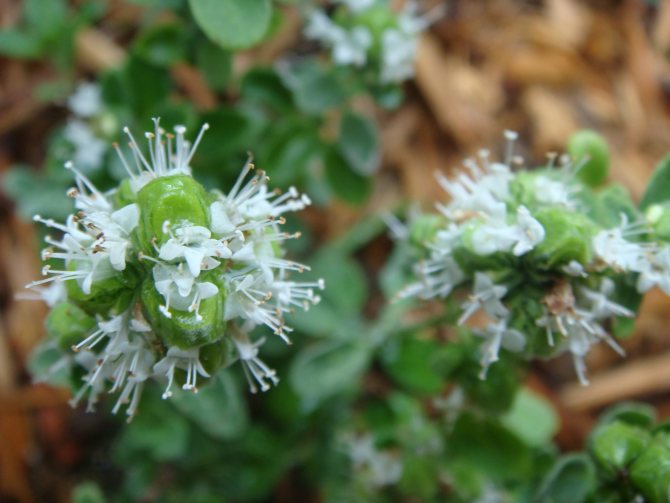

The miraculous marjoram was famous in ancient Egypt. Residents appreciated and revered this fragrant herb. The girls were given bouquets of spicy marjoram as a sign of admiration.
The ancient Greeks considered the plant to be a powerful aphrodisiac that strengthens love.The herb was added to wine and refreshments.
A fragrant plant with a piquant taste was widely used in cooking: it was added to soups, dishes made from vegetables and meat could not do without it. The Arabs called marjoram "incomparable", and the Europeans called "sausage herb." Bavarian sausages were especially famous, since this spice was added to the minced meat.
Many legends and traditions have been associated with this plant. Love potions were prepared with him.
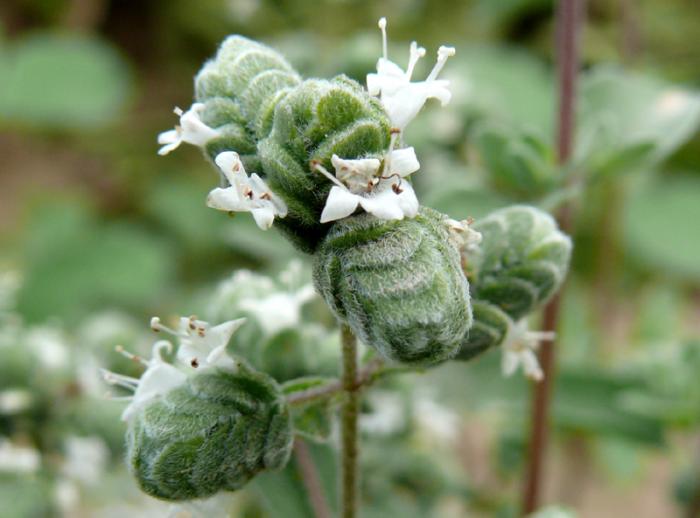

In ancient Greece, girls put marjoram at the head of the bed at night so that Aphrodite, the goddess of love, would show them their future husband.
Grass was planted on the graves of loved ones so that the deceased would be in eternal peace and happiness.
Parents of the newlyweds wove marjoram wreaths so that they live in love and happiness.
Hippocrates mentions in his writings about the medicinal use of the plant. The herb was also used for embalming.
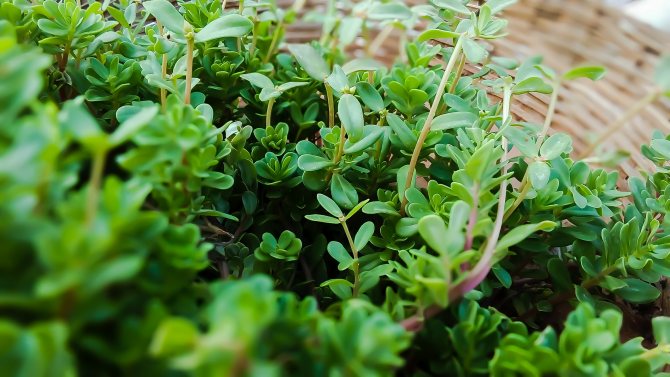

The stems and leaves of young marjoram contain essential oils (about 3.5%), which include compounds such as phenol, tannin, borneol and pinene. The main constituent of the oil is terpenes. During flowering, their maximum number is observed, which attracts bees.
The leaves of the plant contain macro- and microelements: phosphorus, potassium, iron, silicon, zinc. The stems contain vitamins C and A, rutin.
Marjoram spicy plant species
Marjoram is very similar to oregano, both in appearance and in taste, and unknowing people can easily confuse these two plants. But in fact, these herbs, although they belong to the same family and are related, are not the same.
Marjoram is divided into two main types: garden leaf and flower. Let's talk about each in more detail.
Leafy garden type
Marjoram is perennial; in the wild, it is most often found in warm southern countries. Visually, it is a sprawling shrub with high shoots (30-50 cm in length) and numerous oval leaves. Its shoots are quite strong, and the foliage is dense.
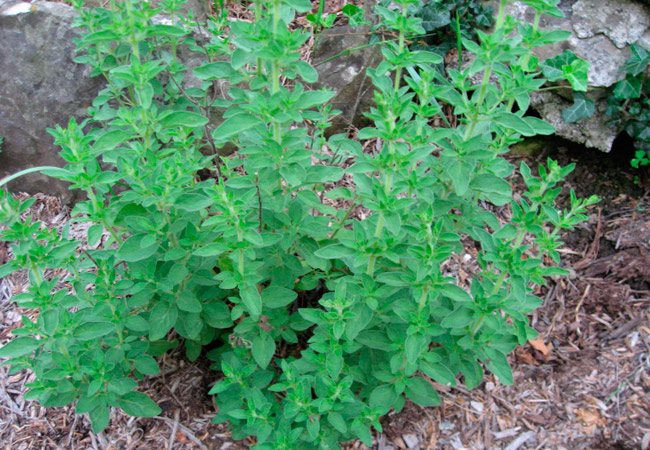

Types and varieties of marjoram
It is this species that is most often cultivated for consumption as a seasoning. It is more aromatic and perfectly retains all its qualities when dried. In cold climates, it grows only in greenhouse conditions, it is unpretentious in itself, but it is afraid of frost.
Floral view
The shrub of this species is less vigorous, its average height is 20, maximum 40 cm. In the wild, it is widespread in the East, in warm European regions. The plant has many shoots that form a spherical shape. The leaves are smaller than those of the garden marjoram.
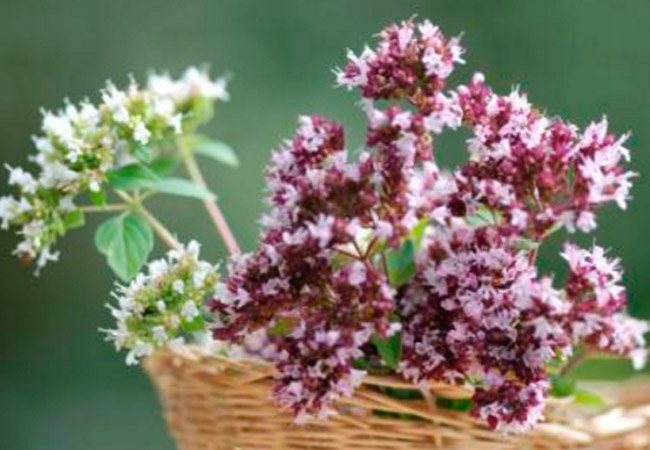

Floral marjoram
For several months, the greens bloom in small but dense inflorescences.
This type is more suitable for the manufacture of essential oils and for medicinal purposes, as it contains more useful chemical compounds. Although it is also quite suitable as a condiment. It lends itself well to cultivation, like all lamines, to the family of which it belongs.
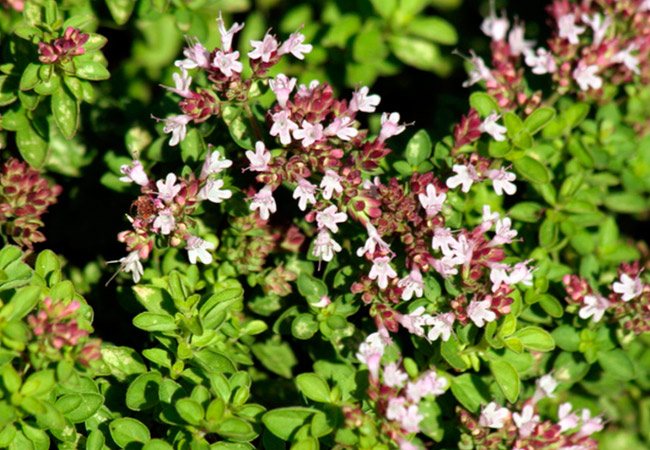

Perennial floral marjoram
Types of garden spices
Gardeners' beds usually contain two varieties of this graceful plant - floral and leaf marjoram. The first is distinguished by the fact that it is rich in a large number of flowers, is more compact in size, and its leaves on the stem are sparse. Leaf, on the contrary, is more powerful, abundantly covered with green mass and blooms with only a couple of buds.
Gardeners' beds most often contain two varieties of this graceful plant - floral and leaf marjoram.
Cutting the grass must be carried out during mass flowering, and with a sharp blade, leaving stubble up to about 6 cm long. If you plan to use the plant fresh, then mowing is required as needed in the right amount. To harvest greenery in a dried form, it is necessary to cut everything off at the same time, this will allow the grass to not lose its useful qualities.
Contraindications for use
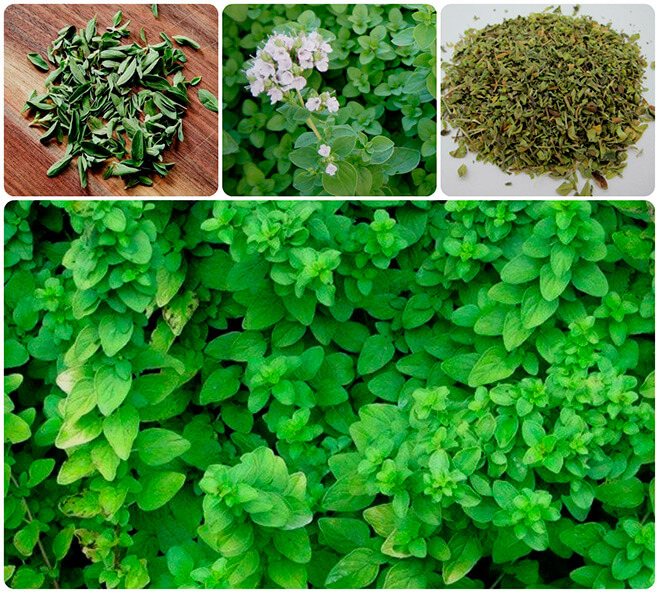

Despite the fact that marjoram has many medicinal properties, it also has contraindications.
It is forbidden to use spice:
- During pregnancy, since the plant contains phytoestrogens, which can harm the health of the expectant mother, especially in the early stages;
- In childhood (up to 6 years old). For small children, marjoram is strictly prohibited, regardless of the type and form of its use;
- With increased blood clotting.
- With vein thrombosis and thrombophlebitis;
- In case of individual intolerance.
The use of marjoram in cooking
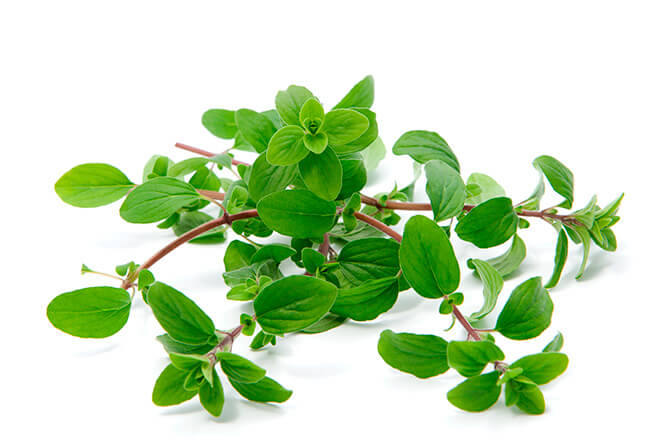

Of course, the main use of greens is in cooking:
- The spice goes well with fried stews, as well as meatballs, sausages and pates.
- Marjoram should be consumed along with hard-to-digest foods such as peas, lentils, beans, beans, and chickpeas.
- The plant is used for canning vegetables.
- Marjoram goes well with mushrooms and sauerkraut.
- Greens can be added to tea.
- Marjoram juices and infusions are used in the preparation of various sauces.
- Marjoram extracts are used in the preparation of liqueurs.
How to choose and store marjoram?
When choosing marjoram, you need to pay attention to the following points:
The leaves of the plant should have a rich grayish-green color. There should be no sluggishness or damage on it. A quality product has a pronounced spicy aroma with a sweet-bitter tinge. Dried marjoram is best purchased in branded packaging
In this case, you should pay attention to the date of manufacture and the expiration date of the product .. Fresh marjoram is usually stored in the refrigerator
Before placing greens for storage, they must be washed and wrapped in a bag or put in a jar of water. In dried form, the spice is stored in an airtight container, this helps to preserve its aroma and beneficial properties.
Fresh marjoram is usually kept in the refrigerator. Before placing greens for storage, they must be washed and wrapped in a bag or put in a jar of water. In dried form, the spice is stored in an airtight container, this helps to preserve its aroma and beneficial properties.
Growing marjoram from seeds
Marjoram seeds do not germinate well in open ground, so the culture should be grown through seedlings:
- Sowing is carried out in the last days of March or at the beginning of April. A soil mixture is placed in the container (humus and sod land in a ratio of 1: 2, respectively). In addition, you can add crushed chalk or lime (in small quantities).
- After slightly moistening the substrate, a mixture of seeds and river sand (in a ratio of 1: 5) should be laid on its surface, and the soil passed through a sieve should be poured on top of it (with a layer of 3 mm). Cover containers with glass or foil. Growing temperature + 20-22 °. From time to time, containers need to be ventilated and condensation removed. If the mixture dries up, it should be sprayed.
- After 2-3 weeks, when the first shoots hatch, it is necessary to remove the glass (film) shutter from the seedlings. In the place of cultivation, it is necessary to lower the temperature to + 16 °. After 1 week, set the following temperature regime in the room - in the daytime + 16-18 ° C, at night + 14-16 ° C.
- Seedlings can be planted in the ground only after the end of the night frost period.
- Up to 20 bushes should be planted in the garden bed. The optimal distance between bushes is up to 20 cm, between rows 40-50 cm. A well-lit garden bed should be protected from drafts and sudden gusts of wind.
- The plant should be planted on sandy loam or loamy soil. 6-7 days before planting, the garden must be dug to a depth of half a meter, and then fertilize the soil. For 1 sq. m add compost (half a bucket) or humus, urea (20 g), potassium sulfate (20 g), as well as superphosphate (40 g). After the garden has been dug up, it must be moistened with water (1 sq. M - 5 l).
- When planting seedlings, the earthen lump is not removed.After planting, the soil around the plants must be compacted and moistened. Organize daily watering (within 14-20 days), make sure that the seedlings are not exposed to direct sunlight. When the plants get stronger, you need to take care of feeding. For this, a nitrate solution is perfect (for 1 square meter, you need to prepare a mixture - 15 g of saltpeter and 10 liters of water).
To prevent the marjoram bushes from drying out, they must be carefully looked after.
You need to take care of:
- regular watering;
- loosening the soil;
- weeding;
- top dressing;
- protection against fungi.
Marjoram is a perennial, aromatic herb with many health benefits that deserves its own place in every kitchen. So for those who haven't tried the hot spice yet, it's time to fix it.
Reproduction methods
There are 3 ways to breed marjoram.
Seeds
Soak the seeds in a solution of potassium permanganate for two hours. Sow into prepared soil to a depth of 0.5 cm. Pour with a spray bottle. Cover the pot with a transparent bag, put in a warm place until shoots appear. When the first sprouts appear, remove the package, rearrange the container on a sunny windowsill.
Further care consists in timely watering, loosening, and weed removal. Young shoots can be planted in open ground, or they can be grown indoors. The first shoots are ready for cutting in 5-6 weeks, then they are cut as they grow back.
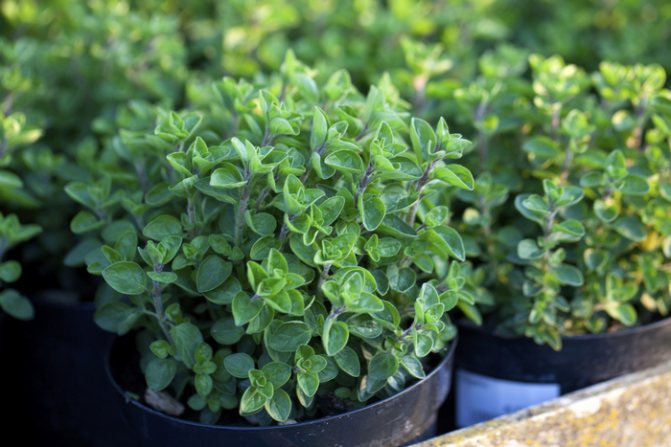

Cuttings
Cut off green cuttings from an adult bush (before flowering), place in a container with water for rooting. When the first roots appear, plant them in flower containers. After about 2-3 weeks, new shoots will appear, which grow rapidly.
Cuttings can be cut from a bunch of marjoram that you bought at the market or store. The main thing is that the plant is fresh.
By dividing the bush
Dig a bush from the garden or remove it from the pot, carefully divide (cut) into several parts. Each part must have at least one shoot with a bud. Plant in a new location or in a new pot. In a few weeks the bush will "fluff up", the young overgrown shoots can be eaten.
Medicinal properties of marjoram
Marjoram is used for the manufacture of drugs intended for the complex therapy of pathologies of the digestive, urinary and respiratory systems.
They are often prescribed for neuroses and insomnia as a sedative.
The use of infusions and decoctions of marjoram herb is indicated for flatulence, runny nose, colds, flu.
Marjoram infusion is used for gargling with toothache and inflammatory processes in the mouth and throat.
Ointment, based on marjoram, treats rheumatism and the effects of trauma.
Marjoram gruel compresses work well on old calluses.
Medicinal properties of marjoram:
- Stimulating
- Spasmolytic
- Diaphoretic
- Vasodilator
- Pain reliever
- Reducing sexual arousal
- Sedative
- Wound healing
- Antiseptic and antioxidant
- Women's health regulator - marjoram oil and extract normalizes the menstrual cycle in women.
An interesting property of this herb is to replace salt, which is very important for some diseases, when salt cannot be used at all or very limitedly. Here this spice comes to the rescue
For patients with diabetes, obesity, as well as for those who adhere to salt-free diets, marjoram is indispensable
In case of violation of cholesterol metabolism, marjoram is considered an obligatory seasoning for animal fats - for meat, cheeses and cottage cheese.
It is recommended to take it in the form of decoctions and tinctures:
- with acute rhinitis
- for the treatment of kidney stones
- to normalize the work of the heart
- with diseases of the upper respiratory tract.
- has an antiseptic effect
- relieves pain and emotional stress
- removes spasms
- good for sweating
- fights bacteria and heals wounds and abrasions
- lowers high blood pressure
- fights insomnia
- Antiseptic and antioxidant.Women's health regulator and wound healing
How to make marjoram infusion?
Pour 1 tbsp. l. chopped spices into ½ cup boiling water, yell with a lid and leave for 30 minutes. Strain and use as directed.
Applied recipes
Marjoram, whose medicinal properties are well known, has long found universal application in many spheres of human life, therefore there are many different formulations that allow you to use it as efficiently as possible. The easiest way to make tea is from marjoram, for this you need to take 50 g of plant flowers and pour the raw material with 3 cups of boiling water, then insist for 10 minutes and strain. For the preparation of the solution, grass is equally suitable.
The best option would be to drink 3 glasses throughout the day, this will strengthen the immune system and allow you to cope with any disease.
There is also a recipe for making marjoram ointment, which helps a lot with all kinds of muscle sprains, runny nose in infants and rheumatism. To prepare it, it follows in 1 tbsp. l. alcohol dissolve 1 tbsp. l. marjoram powder. Then add 1 tbsp to the mixture. l. butter and put the composition in a steam bath for 10 minutes. Then strain and let cool the resulting ointment. Please note that the oil must be fresh and not contain salt. It is required to start application by simply rubbing a little of the resulting mixture into problem areas. If we are talking about a baby's cold, then you can safely apply the medicine inside and outside the nose. The result will not be long in coming.

